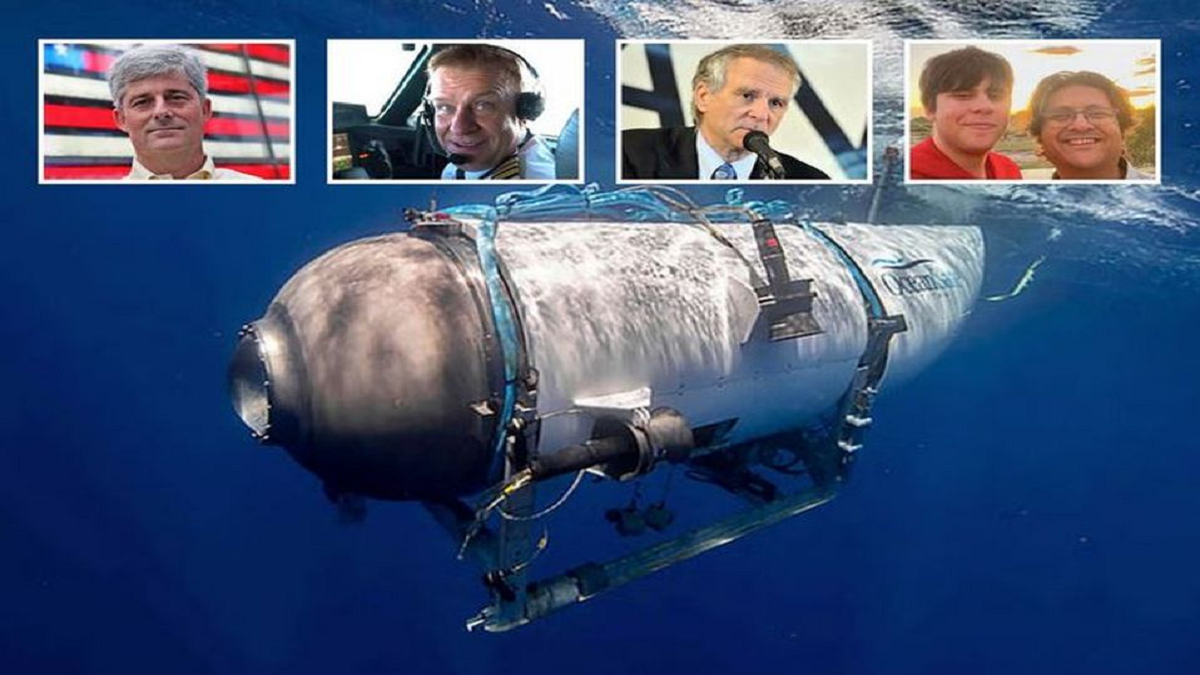The United States Coast Guard reported that a deep-sea submersible undertaking an expedition to the historic Titanic wreckage tragically suffered a ‘catastrophic implosion’, resulting in the loss of the entire crew onboard.
The Titan, a submersible vessel belonging to U.S. company OceanGate Expeditions, was found in fragments after an extensive five-day search operation conducted by multinational teams. The disheartening discovery was made by a Canadian ship’s robotic diving vehicle, which located a debris field on the ocean floor near the Titanic’s bow.
The tragic implosion occurred approximately 2.5 miles below the North Atlantic surface, in a remote sector, as disclosed by U.S. Coast Guard Rear Admiral John Mauger. He shared that the five key segments of the 22-foot-long Titan were identified among the wreckage, though no mention was made regarding human remains.
OceanGate Expeditions, even before the Coast Guard’s press briefing, released a statement confirming the loss of the five men aboard Titan. The casualties included the company’s founder and CEO, Stockton Rush, British billionaire Hamish Harding, UK-based businessman Shahzada Dawood and his son Suleman, and Paul-Henri Nargeolet, a French oceanographer considered a leading expert on the Titanic.
The company’s statement commemorated the lost explorers as individuals who embodied a distinctive spirit of adventure and held a profound passion for ocean exploration and conservation.
Despite comprehensive efforts from U.S., Canadian, French, and British search teams and support personnel, the Titan remained elusive until Thursday. The vessel had been missing since losing contact with its surface support ship an hour and forty-five minutes into a planned two-hour dive on Sunday.
Read More: Explosion in Paris’ Latin Quarter Triggers Search for Missing Persons Amid Debris
According to Rear Admiral Mauger, the wreckage pattern suggests that the catastrophic implosion likely occurred near the end of the submersible’s descent. The U.S. Navy’s analysis of acoustic data supported this, revealing an ‘anomaly consistent with an implosion or explosion’ near Titan’s last known location.
Recovery of the victims’ remains remains uncertain due to the extreme conditions at such oceanic depths. Robotic vehicles will continue to gather evidence, Mauger stated, but personnel and vessels will begin to demobilize from the scene in the next 24 hours.
This tragic incident unfolded amidst the backdrop of OceanGate’s undersea expeditions to the Titanic, which the company has conducted since 2021. Located 900 miles east of Cape Cod, Massachusetts, and 400 miles south of St. John’s, Newfoundland, the RMS Titanic has been resting in the deep since hitting an iceberg on its maiden voyage in 1912. The historical journey tragically claimed over 1,500 lives.
The interest in the Titanic, heightened by the acclaimed 1997 film, ensured this maritime disaster received widespread attention, highlighting once again the dangers inherent in exploring the world’s deepest depths.





















